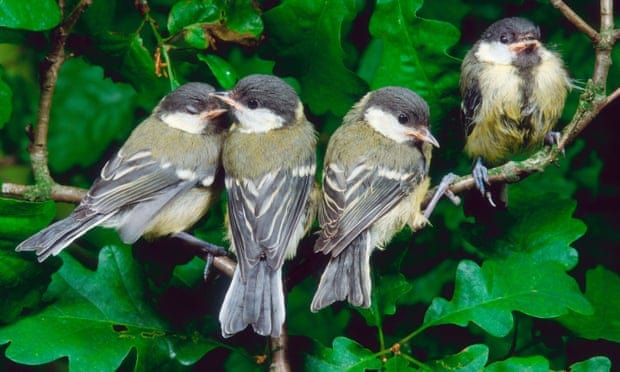Distinguishing individual birds using AI could aid avian behaviour research
For even the most sharp-eyed of ornithologists, one great tit can look much like another.
But now researchers have built the first artificial intelligence tool capable of identifying individual small birds.
Computers have been trained to learn to recognise dozens of individual birds – which could potentially save scientists arduous hours in the field with binoculars, as well as the catching of birds to fit coloured rings to their legs.
“We show that computers can consistently recognise dozens of individual birds, even though we cannot ourselves tell these individuals apart,” said André Ferreira, a PhD student at the Centre for Functional and Evolutionary Ecology (CEFE-CNRS), in France. “In doing so, our study provides the means of overcoming one of the greatest limitations in the study of wild birds – reliably recognising individuals.”
Ferreira began exploring the potential of artificial intelligence while in South Africa, where he studied the co-operative behaviour of the sociable weaver, a bird which works with others to build the world’s largest nest.
He was keen to understand the contribution of each individual to building the nest, but found it hard to identify individual birds from direct observation because they were often hiding in trees or building parts of the nest out of sight. The AI model was developed to recognise individuals simply from a photograph of their backs while they were busy nest-building.
Together with researchers at the Max Planck Institute of Animal Behaviour, in Germany, Ferreira then demonstrated that the technology can be applied to two of the most commonly-studied species in Europe: wild great tits and captive zebra finches.
For AI models to accurately identify individuals they must be trained with thousands of labelled images. This is easy for companies such as Facebook with access to millions of pictures of people voluntarily tagged by users, but acquiring labelled photographs of birds or animals is more difficult.
The researchers, also from institutes in Portugal and South Africa, overcame this challenge by building feeders with camera traps and sensors. Most birds in the study populations already carried a tag similar to microchips which are implanted in cats and dogs. Antennae on the bird feeders read the identity of the bird from these tags and triggered the cameras.

The AI models were trained with these images and then tested with new images of individuals in different contexts. Here they displayed an accuracy of more than 90% for wild great tits and sociable weavers, and 87% for the captive zebra finches, according to the study in the British Ecological Society journal Methods in Ecology and Evolution.
While some larger individual animals can be recognised by the human eye because of distinctive patterns – a leopard’s spots, or a pine marten’s chest markings, for example – AI models have previously been used to identify individual primates, pigs and elephants. But the potential of the models had not been explored in smaller creatures outside the laboratory, such as birds.
According to Ferreira, the lead author of the study, the use of cameras and AI computer models could save on expensive fieldwork, spare animals from procedures such as catching and marking them, and enable much longer-term studies.
“It is not very expensive to put a remote camera on a study population for eight years but for somebody to stay there and do the fieldwork for that long is not always possible,” he said. “It removes the need for the human to be a data collector so researchers can spend more time thinking about the questions instead of collecting the data.”
The AI model is currently only able to re-identify individuals it has been shown before. But the researchers are now trying to build more powerful AI models that can identify larger study groups of birds, and distinguish individuals even if they have never seen them before. This would enable new individuals without tags to be recorded by the cameras and recognised by the computers.

